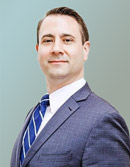Below you will find a real life case study of a couple who is looking for financial advice on how best to arrange their financial affairs. Their names and details have been changed to protect their identity. The Globe and Mail often seeks the advice of our Portfolio Manager & Senior Financial Planner, Matthew Ardrey, to review and analyze the situation and then provide his solutions to the participants.
![]()
Written by:
Special to The Globe and Mail
Published December 20, 2024
 Anne is 67 years old and Zoe is 64. Anne owned a successful consulting firm, while Zoe worked as an analyst.
Anne is 67 years old and Zoe is 64. Anne owned a successful consulting firm, while Zoe worked as an analyst.
When they retired, Anne and Zoe sold their cottage and one of their two rental properties, investing the proceeds in financial markets. They own their Ottawa-area house and the remaining rental property outright.
Anne is 67 years old and Zoe is 64. Anne owned a successful consulting firm, while Zoe worked as an analyst.
“A large portion of our investments are in the stock market, and we worry about a market correction – or worse, an economic collapse – given the political environment down south,” Anne writes in an e-mail. Uncertainty arising from the election of president-elect Donald Trump has them on edge. “We would like some strategies for the preservation of capital that we have worked so hard to attain.”
“We see ourselves travelling twice a year, love to entertain, and foresee an annual budget of about $120,000 a year net of taxes,” Anne adds. They wonder when they should sell the remaining investment property – before or after they begin collecting government benefits.
One of the women has high medical expenses because of a chronic health condition.
We asked Matthew Ardrey, a portfolio manager and certified financial planner at TriDelta Private Wealth in Toronto, to look at Anne and Zoe’s situation. Mr. Ardrey also holds the designation of advanced registered financial planner.
What the expert says
“One of the best ways to weather economic uncertainty is through yield,” Mr. Ardrey says. Anne and Zoe have a combined investment portfolio of nearly $2.2-million, with $466,000 in cash and cash equivalents, such as guaranteed investment certificates.
They have a paid-off home worth $1.4-million and Anne has a rental property worth $850,000 that generates about $12,000 a year in rental income after expenses.
Anne asks when she should sell the rental property: before or after she begins collecting Canada Pension Plan and Old Age Security benefits at 70?
“Selling after age 70 would certainly result in the full clawback of her OAS,” Mr. Ardrey says. “Holding all other factors equal, it makes more sense for her to sell it sooner.”
In his analysis, he has Anne selling the property in 2026. “This will allow her some potential for growth in value because it is likely housing prices will rise if interest rates continue to fall,” the planner says. The after-tax proceeds will be added to Anne’s investment account.
Both Anne and Zoe plan to take CPP and OAS at age 70. Zoe will receive about 20 per cent of the CPP maximum based on the numbers provided. Anne also has a small pension of $388 a month indexed to inflation.
Zoe and Anne spend $120,000 a year. This amount is inflation-adjusted throughout the projection at a rate of 3 per cent. Life expectancy for both is age 95.
Based on their asset mix of 22-per-cent cash and cash equivalents, 16-per-cent bonds and the remainder in stocks or stock funds with a heavier weighting to Canada and the United States than to international markets, the expected rate of return on their portfolio in future is 4.87 per cent, Mr. Ardrey says.
“Given the above factors, Zoe and Anne can meet their goals with room to spare,” the planner says.
“To truly understand the risk in this plan, we need to move beyond the straight-line projection of a steady rate of return because we know that life and investments rarely ever move in a straight line,” Mr. Ardrey says. “To ensure the viability of this plan, we stress-test it by using a Monte Carlo simulation.”
A Monte Carlo simulation introduces randomness to a number of factors, including returns, to stress-test the success of a retirement plan.
Should you start collecting CPP at age 65 or earlier? Our CPP calculator compares the benefits.
“In this plan, we have run 1,000 iterations with the financial-planning software to get the results,” he says. For a plan to be considered “likely to succeed” by the program, it must have at least a 90-per-cent success rate, meaning at least 900 trials out of 1,000 succeed. If it is below 60 per cent, then it is considered “unlikely to succeed.” Between there is “somewhat likely.”
Based on the Monte Carlo analysis, Anne and Zoe’s plan has an 83-per cent chance of success, which is close to the “likely to succeed” threshold but still could use some improvement, the planner says.
One of the biggest concerns is the $466,000 they have in cash and equivalents, Mr. Ardrey says. “Assuming we are in a falling interest-rate environment, we will be seeing lower and lower return rates on these assets,” he notes. “They should consider shifting about half of the cash to fixed income. This could be done by buying individual bonds or low-cost exchange-traded funds,” the planner says.
This, along with the $80,000 they have in bank accounts, would be more than two years’ of expenses in cash and equivalents, which should be sufficient to continue their lifestyle through any short-term market volatility.”
They may also want to consider more geographic diversification in the portfolio, he says. “Though the United States has been the market leader for the past couple of years, this can always change in the future.”
Their portfolio structure lacks tax efficiency, Mr. Ardrey says. “I can see the value of having cash equivalents in the non-registered account because this is likely where the funds are currently being drawn from,” the planner says. “What I see as a mismatch is having fixed income in the non-registered account and stocks in the registered retirement savings plan.”
Fixed income is taxed as interest income, which is less favourable than dividends or capital gains on stocks. Also, RRSP/registered retirement income fund (RRIF) withdrawals are fully taxable, so interest income in those accounts works better overall.
“From a planning perspective, I would certainly recommend maximizing both tax-free savings accounts,” the planner says. There is no point paying tax on investment income when you do not have to, he adds.
As for the TFSA holdings, “I am personally a proponent of having equities in the TFSAs,” Mr. Ardrey says. The goal would be to make the tax-free account as large as possible.
Anne and Zoe are using a portfolio manager, who can advise them where to invest and how to take advantage of changes in market conditions, but “perhaps their concerns about the Trump presidency are not being heard,” Mr. Ardrey says. “Rest that your bonds pay,” he says. “These amounts are generally unchanged through market cycles, making them a solid way to invest.” To illustrate, a portfolio of $2.2-million with a yield of 5 per cent could generate $110,000 of income a year – regardless of whether the underlying securities are up or down in value.
From an estate-planning perspective, they should make the assets in Anne’s name joint with the right of survivorship, the planner says. “This does not change anything for income-tax filing; however, if Anne’s plan is to leave everything to Zoe, making the assets joint in this fashion will avoid probate taxes. At their current value, I estimate there would be about $50,000 of probate taxes payable.”
Client situation
The people: Anne, 67, and Zoe, 64.
The problem: How to preserve their capital in a time of economic and political uncertainty.
The plan: Yield is the best defence against market uncertainty. To improve it, shift some of their big cash holdings to bonds or bond ETFs. They will still have a big cash cushion to tide them over any ups and downs in financial markets. Sell the rental property soon. Take steps to make the portfolio more tax-efficient.
The payoff: The confidence to see past short-term market swings and economic uncertainty.
Monthly net income: As needed.
Assets: Bank accounts $80,000; non-registered portfolio $916,055; Anne’s TFSA $116,045; Zoe’s TFSA $53,515; Anne’s RRSP $1,025,360; Zoe’s RRSP $25,555; residence $1,500,000; rental property $850,000. Total: $4.6-million.
Monthly outlays: Property tax $660; water, sewer, garbage $70; home insurance $190; electricity $200; security $70; heating $185; maintenance, garden $400; vehicle lease $315; car insurance $160; fuel, oil, maintenance, parking $385; groceries $800; clothing $75; gifts, charity $150; vacation, travel $700; dining, drinks, entertainment $210; personal care $100; pets $75; sports, hobbies $720; subscriptions $155; doctors, dentists $3,000; drugstore $175; health, dental insurance $385; phones, TV, internet $385; TFSA $600. Total: $10,165.
Liabilities: None.
Want a free financial facelift? E-mail finfacelift@gmail.com.
Some details may be changed to protect the privacy of the persons profiled.

Matthew Ardrey
Portfolio Manager & Senior Financial Planner
matt@tridelta.ca
(416) 733-3292 x230
